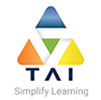Participants learn to retrieve data from different types of sources such as flat files or relational schemas and also to use the different transformation operators to design an ETL task.
About Oracle Warehouse Builder
Who should take this course?
Business Intelligence Developer
Data Warehouse Developer
Data Warehouse Administrator
Developer
Support Engineer
Data Warehouse Analyst
Prerequisites
Oracle BI Warehouse Builder 11g R2: Getting Started (OBE)
Introduction to Business Intelligence Products
Oracle Database 11g: Data Warehousing Fundamentals
Course Content
Installing and Setting Up the Warehouse Builder Environment
What Is Oracle Warehouse Builder?
Basic Process Flow of Design and Deployment
Oracle Warehouse Builder Licensing and Connectivity Options
Installing Oracle Warehouse Builder 11.2
OWBSYS Schema
Using OWB 11.2 with Database 10g R2
Using the Repository Assistant to Manage Workspaces
Supported operating systems (OS), sources, targets, and optional components
Getting Started with Warehouse Builder
Logging In to OWB Design Center
Overview of the Design Center
OWB Projects
Overview of Objects within a Project
Overview of Objects within an Oracle Module
Organizing Metadata Using Foldering
Locations Navigator and Globals Navigator panels
Setting Projects Preferences: Recent Logons
Understanding the Warehouse Builder Architecture
Warehouse Builder Development Cycle
Overview of the Architecture for Design, Deployment, Execution
Overview of Configurations, Control Centers, and Locations
Creating Target Schemas
Registering DB User as an OWB User
Roles and Privileges of Warehouse Builder Users
Registering an Oracle Workflow User
Defining Source Metadata
Data warehouse implementation: Typical steps
Difference between Obtaining Relational and Flat File Source Metadata
Creating Flat File Module
Sampling Simple Delimited File
Sampling Multi-record Flat File
Creating an Oracle Module
Selecting the Tables for Import
Defining ETL Mappings for Staging Data
Purpose of a Staging Area
Define OWB Mappings
Mapping Editor Interface: Grouping, Ungrouping, and Spotlighting
Creating External Tables
Create and Bind process
Levels of Synchronizing Changes
Using the Auto mapper in the Mapping Editor
Set loading type and target load ordering
Using the Data Transformation Operators
Component Palette
Using a Joiner
Lookup Operator: Handling Multiple Match Rows
Using the Subquery Filter Operator
Using the Set, Sequence, and Splitter Operators
Pivot and Unpivot Operators
Using the Aggregator, Constant, Transformation, and Pre/Post Mapping Operators
Deploying and Executing in Projects Navigator Panel
Cleansing and Match-Merging Name and Address Data
Integrating Data Quality into ETL
Name and Address Data Cleansing
Name and Address Server
Name and Address Software Providers
Settings in the Name and Address Operator
Reviewing a Name and Address Mapping
Consolidating Data Using the Match Merge Operator
Using the Match Merge Operator in a Mapping
Using Process Flows
Process Flow Concepts
Creating a Process Flow Module, a Process Flow Package and a Process Flow
Types of Activities: Fork, And, Mapping, End Activity
Creating Transitions between Activities
Some More Activities: Manual, SQLPLUS, Email
Generating the Process Flow Package
Deploying and Reporting on ETL Jobs
Logical Versus Physical Implementation
Setting Object Configuration
Deployment Concepts
Invoking the Control Center Manager
Deploy Options and Preferences
Repository Browser
Starting OWB Browser Listener and the Repository Browser
Browsing Design Center and Control Center Reports
Using the Mapping Debugger
Overview of the Mapping Debugger
Initializing a Mapping Debugging Session
Preparing the testing environment and test data
Setting breakpoints and watch points
Evaluating the flow of data to detect mapping errors
Enhancing ETL Performance
Performance Tuning at Various Levels
Performance-Related Parameters in ETL Design
Configuring Mappings for Operating Modes, DML Error Logging, Commit Control, and Default Audit Levels
Enabling Partition Exchange Loading (PEL) for Targets
Performance-Related Parameters in Schema Design
Configuring Indexes, Partitions, Constraints
Enabling Parallelism and Parallel DML
Setting Tablespace Properties and Gathering Schema Statistics
Managing Backups, Development Changes, and Security
Overview of Metadata Loader Utilities (MDL)
Managing Metadata Changes by Using Snapshots
Using Change Manager
Version Management of Design Objects
Graphical UI for Security Management
Object-Level Security
Setting Security Parameters
Integrating with Oracle Business Intelligence Enterprise Edition (OBI EE)
Business Justification: Tools Integration
Integrating with OBI EE and OBI SE
Transferring BI Metadata to OBI EE Server
Setting Up the UDML File Location
Deriving the BI Metadata (OBI EE)
Deploying the BI Module
Converting the UDML File for OBI EE
Oracle BI Admin and Answers Tool
Appendix B: Creating Experts
Harnessing OWB Power and Complexity for New Users
OWB “Experts” : Directed Guidance and Knowledge Management
Creating an Expert
Starting an Expert
Creating Your Own Custom Dialog
Scenario: ROLAP to MOLAP in Five Easy Steps
Scenario: Expert for Creating External Table
Appendix C: Using Diagnosis and Debugging Techniques
Collecting Information Before Contacting Oracle Support
Sequence Used by Oracle Support Representatives to Process Calls
Activating Debugging and Logging for Full Java Debug Trace
Activating Tracing
Using the Service_Doctor.sql Script
Troubleshooting and Diagnosing Errors in Control Center Agent (CCA)
Run-Time Views and Utilities
Online Warehouse Builder Resources
Call Now- +91-921-276-0556


